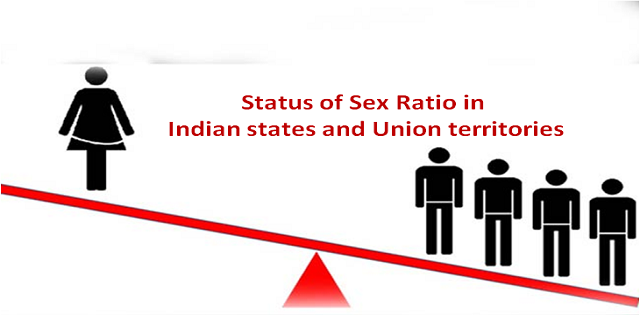
SEX RATION: INDIA’s STATISTICS
WHY IN NEWS?
- Recently, C Rangarajan (former Chairman, Prime Minister’s Economic Advisory Council) argued that there is an urgent need to reach young people both for reproductive health education and services as well as to cultivate gender equity norms.
- His arguments are based on the Sample Registration System (SRS) Statistical Report (2018) and United Nation Population Fund (UNFPA) State of World Population 2020.
SRS Report
- SRS is the largest demographic sample survey in the country that among other indicators provide direct estimates of sex ratio, fertility rate etc. through a nationally representative sample.
- It is brought by the Office of Registrar General.
UNPF
- The UNFPA is aimed at improving reproductive and maternal health worldwide. It is headquartered in New York.
SEX RATIO AT BIRTH:
- Biologically normal sex ratio at birth is 1,050 males to 1,000 females or 950 females to 1,000 males.
- The SRS Report 2018 shows that sex ratio at birth in India, declined marginally from 906 in 2011 to 899 in 2018.
- Sex ratio is measured as the number of females per 1,000 males.
- The UNFPA State of World Population 2020 estimated the sex ratio at birth in India as 910, which is on the lower side of index.
- This is a cause for concern because this adverse ratio results in a gross imbalance in the number of men and women and its inevitable impact on marriage systems as well as other harms to women.
TOTAL FERTILITY RATE:
- According to SRS Report 2018, TFR has been declining in India for some time now. It declined from 2.4 to 2.2 during the period between 2011 and 2018.
- In 2011, 10 states had a fertility rate below the replacement rate. This increased to 14 states in 2020.
- Fertility is likely to continue to decline and it is estimated that replacement TFR of 2.1 would soon be reached for India as a whole.
- TFR is the number of children a mother would have at the current pattern of fertility during her lifetime.
- Replacement rate is the average number of children born per woman—at which a population exactly replaces itself from one generation to the next, without migration.
- Many people believe that the population would stabilise or begin to reduce in a few years once replacement fertility is reached.
- However, this is not so because of the population momentum effect, a result of more people entering the reproductive age group of 15-49 years due to the past high-level of fertility.
- For instance, the replacement fertility level was reached in Kerala around 1990, but its annual population growth rate was 0.7% in 2018, nearly 30 years later.
CHALLENGES:
- Regressive Mindset: There is considerable son preference in all states, except possibly in Kerala and Chhattisgarh. This son’s preference is derived from a regressive mindset. E.g.: People associate girls with dowry.
- Misuse of Technology: Cheaper technology like ultrasound helps in sex selection.
- Failure in Implementation of Law: The Prenatal Conception and Prenatal Determination Act (PC-PNDT), 1994 which punishes healthcare professionals for telling expectant parents the sex of a child with imprisonment and hefty fines, has failed to control the sex selection.
- Reports found major gaps in the training of personnel implementing PC-PNDT. Poor training meant that they were unable to prepare strong cases against violators to secure convictions.
- Illiteracy: Illiterate women in the reproductive age group of 15-49 years have higher fertility than literate women.
GOVERNMENT INTERVENTION:
- Beti Bachao Beti Padhao Scheme: The sharp decline in sex ratio as pointed by Census 2011 data called for urgent action. Beti Bachao Beti Padhao Scheme was launched in 2015 in Panipat, Haryana to address the issue of decline in child sex ratio and related issues of empowerment of girls and women over a life cycle continuum.
- It is a triministerial effort of the ministries of Women and Child Development, Health & Family Welfare and Human Resource Development (now Ministry of Education).
WAY FORWARD
- Effective implementation of the existing women- and children-related policies, including women’s property ownership, are required to empower women, to ensure girl child’s survival, and to reduce gender gap in access to healthcare.
